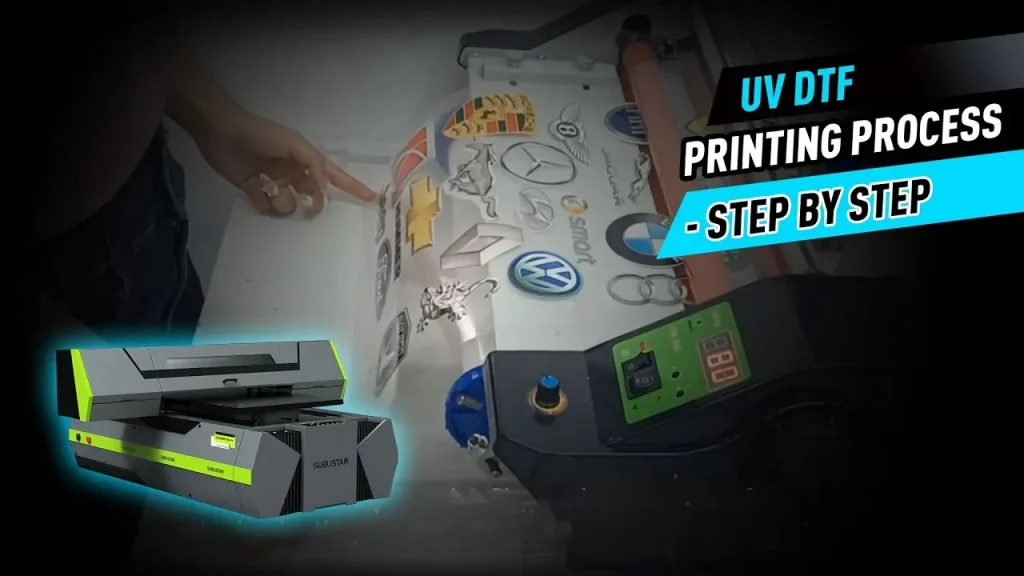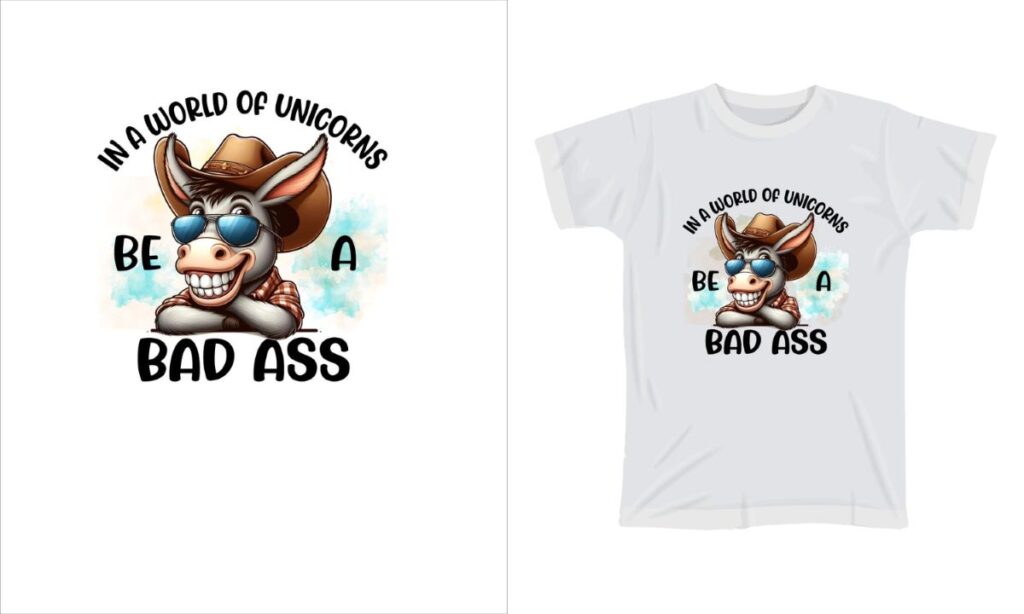In the world of modern printing technology, the UV DTF printing process stands out as a revolutionary method that merges the best aspects of UV printing and Direct to Film (DTF) printing. This innovative technique is not just about creating vibrant designs; it also emphasizes speed and durability in print outcomes, making it a preferred choice for many businesses and creators. Whether you’re interested in fabric printing, promotional items, or custom merchandise, learning about the UV DTF printing process can greatly enhance your creative projects. With its ability to print on a variety of substrates, this method is quickly becoming famous for its versatility and sustainability in printing practice. Join us as we delve deeper into this fascinating printing technology and uncover its unique advantages that cater to both aesthetic appeal and eco-consciousness.
UV Direct to Film (DTF) printing, often regarded as cutting-edge in the realm of print techniques, combines advanced UV printing capabilities with the DTF methodology, creating exceptional opportunities for vibrant and durable prints. This form of printing technology utilizes specialized inks that cure instantly under UV light, ensuring both speed and longevity. Often referred to as direct to film printing, this approach allows for a remarkable range of materials to be printed upon, attracting attention for its efficiency in customizing promotional products and textiles alike. Notably, the emerging focus on sustainable printing options makes the UV DTF process not only a practical choice for businesses but also an environmentally friendly one. As we explore further, the advantages of this printing technique reveal why it’s becoming a favorite among artisans and entrepreneurs.
Understanding the UV DTF Printing Process
The UV DTF printing process is a sophisticated technique that merges the strengths of UV printing technology and direct to film (DTF) printing. By utilizing UV-curable inks that dry instantaneously under ultraviolet light, the process not only achieves rapid production speeds but also ensures that the final prints boast superior durability. The initial stage involves the meticulous preparation of the design, which sets the foundation for high-quality outputs. Graphic design software plays a pivotal role here, allowing operators to customize the artwork to fit specific substrate dimensions, ensuring exceptional detail and accuracy in the final product.
Once the design is ready, it is printed onto a specialized transfer film using highly advanced UV printers. These machines are engineered for precision, delivering vibrant colors that enhance the visual appeal of the finished prints. The cured inks demonstrate remarkable adhesion, making prints resistant to fading, scratching, and various environmental factors. With this cutting-edge technology, UV DTF printing is revolutionizing the way businesses approach custom printing, allowing for rich, robust graphics on an array of materials.
The Advantages of UV DTF Printing
UV DTF printing stands out among traditional printing methods due to its exceptional versatility. While many printing techniques are restricted to specific materials, UV DTF can effectively transfer designs onto a wide variety of substrates, including textiles, plastics, metals, and even glass objects. This capability opens up myriad possibilities for businesses aiming to diversify their product range, from custom apparel to promotional gifts. Furthermore, the durability of prints created through this method is significant, as UV inks not only offer vibrant colors but also exhibit resilience against moisture and UV rays, making them ideal for both indoor and outdoor applications.
Another critical advantage lies in the sustainable aspects of UV DTF printing technology. The printing process is designed to minimize waste, reducing over-spray and preventing excess ink usage. As a result, businesses can embrace environmentally friendly practices while maintaining high-quality output. Additionally, the rapid curing time associated with UV inks accelerates production turnover, allowing companies to meet deadlines swiftly without compromising quality. As sustainability continues to be a focal point for brands and customers alike, the eco-conscious qualities of UV DTF printing gear it towards becoming a preferred choice in the industry.
Key Steps in the UV DTF Printing Process
Understanding the key steps in the UV DTF printing process is essential for anyone looking to harness this technology effectively. The journey begins with design preparation, which involves using specialized graphic design software to create tailored artwork that meets specific requirements. This step is crucial, as a well-prepared design directly impacts the print quality. Designers must pay careful attention to colors, resolution, and dimensions, ensuring that the artwork translates beautifully onto the film.
Following design preparation, the printing phase takes place, where the artwork is transferred onto a special film using high-resolution UV printers. The inks used in this stage are UV-reactive, which means they cure immediately under UV light, solidifying the colors and ensuring a seamless finish. This is followed by the curing stage, where UV light is utilized to solidify the inks, enhancing their adhesion and durability. Finally, the transfer process involves applying heat and pressure to securely bond the cured design onto the selected substrate. This meticulous series of steps highlights the precision and care that goes into each UV DTF print.
Sustainable Practices with UV DTF Printing
The rise of UV DTF printing is closely tied to the increasing need for sustainable practices in various industries. As companies and consumers become more environmentally conscious, the shift toward eco-friendly printing solutions is gaining momentum. UV DTF printing technology not only reduces waste through its efficient use of inks but also employs UV-curable inks that contain fewer harmful solvents compared to traditional inks. This reduction in harmful emissions is crucial as it contributes to a healthier environment.
Moreover, the longevity of UV DTF prints means less frequent replacements, lowering overall material consumption over time. The rapid curing process further enhances its sustainability by reducing energy consumption during production. As manufacturers update their practices to align with green initiatives, UV DTF printing stands out as a fitting solution that fulfills the dual demands of quality and ecological responsibility, reinforcing its relevance in the contemporary printing landscape.
Recent Technological Developments in UV DTF Printing
The UV DTF printing technology is continuously evolving, with recent advancements making it more accessible and user-friendly for businesses of all sizes. New printer models equipped with advanced technology not only enhance the printing process but also improve overall output quality. These innovations are designed to streamline workflow, allowing for faster production times without sacrificing the quality of the prints. As technology progresses, operators are receiving more intuitive interfaces and automated features that simplify the printing process, making it easier for newcomers to adopt UV DTF printing.
In addition, improvements in the formulation of UV inks contribute significantly to the development of this technology. Manufacturers are now offering inks that provide greater versatility, allowing for a wider range of applications, including specialty items and substrates. This expansion caters to the growing demand for custom printed products across various industries, such as promotional products, signage, and apparel. As the printing technology landscape shifts, it is evident that UV DTF printing is poised for significant growth, thanks to its adaptability and continuous enhancement.
Exploring the Future of UV DTF Printing
The future of UV DTF printing is bright, driven by emerging trends and consumer preferences for high-quality, sustainable products. As businesses continue to seek innovative ways to stand out in a competitive market, the unique features of UV DTF printing—such as its speed, versatility, and durability—offer significant advantages. Future advancements may further enhance color vibrancy and material compatibility, enabling prints to be more imaginative and intricate than ever before.
Furthermore, as more enterprises adopt eco-friendly practices, UV DTF printing is well-positioned to lead the charge in sustainable printing solutions. With continuous innovations in ink formulations that prioritize environmental safety and further reductions in waste, this technology aligns perfectly with both current demands and future expectations. As brands prioritize sustainable production methods, the adoption of UV DTF printing will likely expand, effectively paving the way for extraordinary growth within the industry.
Frequently Asked Questions
What is the UV DTF printing process and how does it work?
The UV DTF printing process combines UV printing and direct to film printing to produce high-quality prints. It involves preparing a design, printing it onto specialized transfer film using UV inks, curing the print with UV light for durability, and then heat-pressing the design onto various substrates, ensuring vibrant colors and long-lasting results.
What materials can be printed on using UV DTF printing technology?
UV DTF printing technology is versatile and can be utilized on a variety of materials including textiles, plastics, metals, glass, and more. This adaptability makes it an ideal choice for businesses looking to expand their custom printing services.
What are the advantages of using UV DTF printing over traditional printing methods?
The advantages of using UV DTF printing include increased durability due to UV-curable inks, reduced waste from precise printing techniques, rapid turnaround times, and the ability to print on a wider range of materials compared to traditional printing methods.
How does the curing process enhance the quality of UV DTF prints?
The curing process in UV DTF printing solidifies the inks when exposed to UV light, ensuring strong adhesion to the film. This results in prints that are more resistant to fading, scratching, and moisture, which enhances the overall quality and lifespan of the final product.
Is UV DTF printing considered a sustainable printing method?
Yes, UV DTF printing is considered a sustainable printing method. It minimizes ink waste due to precise application and uses eco-friendly UV inks, aligning with the growing trend towards environmentally responsible printing practices.
Where can I use products created with UV DTF printing?
Products created with UV DTF printing can be used across various applications, including custom apparel, promotional items like caps and banners, industrial print solutions, and decorative items. Its durability and versatility make it suitable for many environments.
| Key Steps | Description |
|---|---|
| Design Preparation | Creating and formatting the design using graphic design software. |
| Printing | Printing the prepared design onto a transfer film with UV printers. |
| Curing | Using UV light to solidify the ink on the film. |
| Transfer | Heat-pressing the cured design onto the desired substrate. |
Summary
The UV DTF printing process is revolutionizing the way businesses approach printing, combining the benefits of UV printing technology with the efficiency of the DTF method. By utilizing UV-curable inks that dry instantly upon exposure to UV light, this process not only accelerates printing but also results in durable, high-quality products that withstand environmental challenges. With each step— from meticulous design preparation through to printing, curing, and transferring— this innovative method exemplifies efficiency and versatility in printing, catering to a wide range of materials. Furthermore, its eco-friendly practices and reduced waste significantly contribute to sustainable printing, making the UV DTF printing process a favored choice among today’s environmentally conscious industries. Embracing this technique unlocks new possibilities for custom prints, allowing for creative versatility and unmatched durability.



